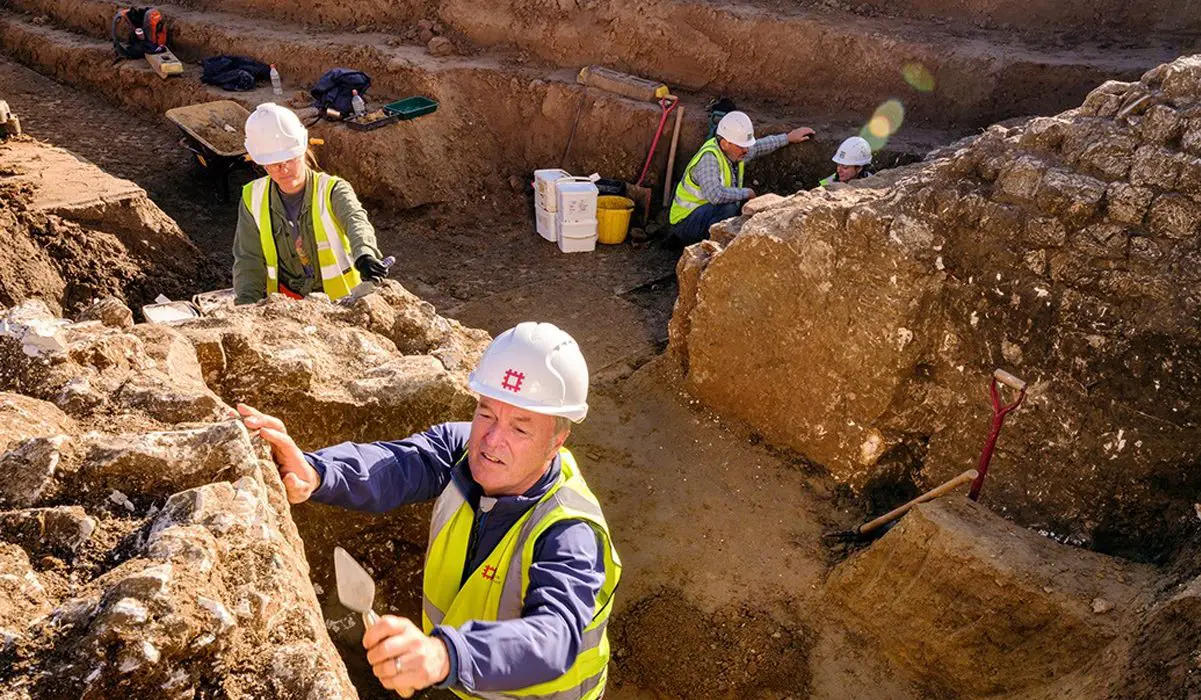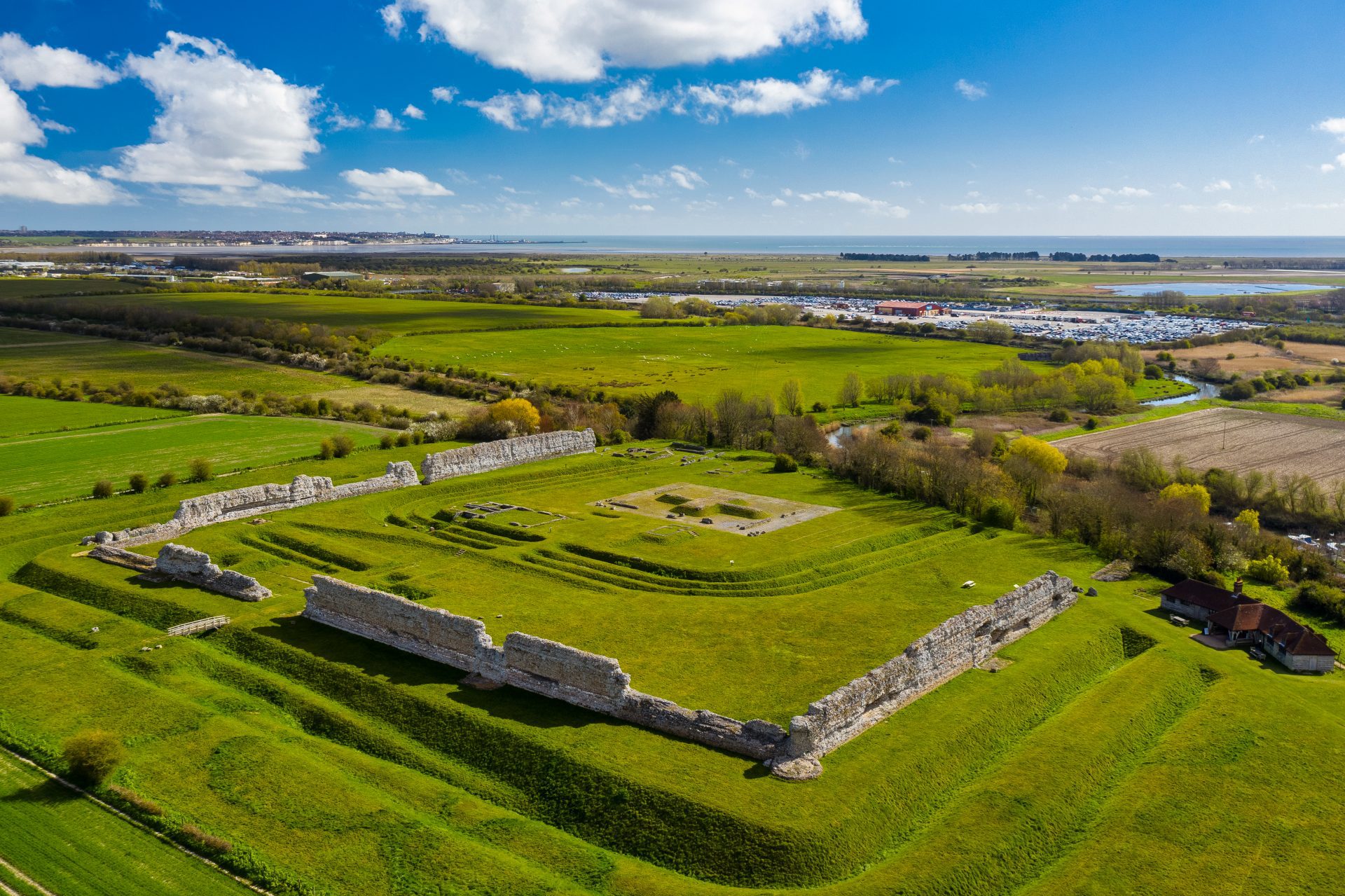Archaeologists conducting excavations at Richborough Castle (Rutupiae) in Kent, have found evidence of a ‘carcer’ cell in the wall of the Roman town’s amphitheatre.
Although a matter of scholarly debate, historians generally agree that Rutupiae was the landing site for the Claudian invasion of what would become the Roman province of Britannia in AD 43.
As the frontier pushed further north, Rutupiae expanded into a flourishing commercial town, boasting temples, a mansio (guest house for visiting officials with a bathhouse and administration buildings), and an amphitheatre that provided the inhabitants of the town with a place for public spectacles and entertainment.
Excavations of the amphitheatre has revealed how it was constructed: the exterior arena wall was up to 6m wide and made of carefully stacked turf, with the outlines of individual turves still visible. The interior wall, defining the arena, was made of mortared chalk blocks with a rendered and plastered face, on which are traces of paint in what once would have been vivid reds and blues, a discovery which is unprecedented in amphitheatres in Britain.

The team also identified a “carcer”, or cell, that would have held those awaiting to enter the arena to meet their fate, such as exotic animals, criminals, or gladiators.
Numerous small finds have been unearthed during the excavation, including butchered animal bones, coins, items of personal adornment, and pottery fragments which provide the evidence required to show that the Roman town at Richborough was occupied by civilians right through until the end of the 4th century AD – the entire Roman period in Britain.
One unusual and moving discovery was the almost complete skeleton of a Roman cat, nicknamed Maxipus by the team who uncovered it, which appeared purposefully buried on the edge of a ditch outside the amphitheatre, in an area of domestic settlement.
Paul Pattison, English Heritage Senior Properties Historian, said: “The discoveries we’ve made during the excavation at Richborough are startling and exciting, and dramatically transform our understanding of the structure of the amphitheatre and the nature of adjacent settlement in the town. We’ve always known that the Roman fort at Richborough was an important place to the Romans, until the very end of their rule, and now we have been able to gather evidence that much of the town outside the fort may also have been settled until the very end.”
Header Image Credit : Oszibusz – Shutterstock





